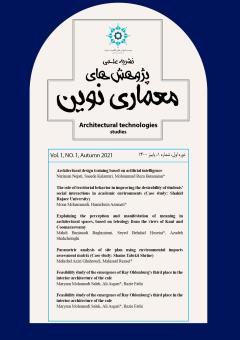-
-
List of Articles
-
Open Access Article
1 - Architectural design training based on artificial intelligence
Nariman Nejati saeede kalantari MohammadReza Bemanian -
Open Access Article
2 - The role of territorial behavior in improving the desirability of students' social interactions in academic environments (Case study: Shahid Rajaee University)
MONA MOHAMMADI hamidreza azemati -
Open Access Article
3 - Explaining the perception and manifestation of meaning in architectural spaces, based on teleology from the views of Kant and Coomaraswamy
Mahdi Baniasadi Baghmirani Seyed Behshid Hosseini azadeh shahcheraghi -
Open Access Article
4 - Parametric analysis of site plan using environmental impacts assessment matrix (Case study: Shams Tabrizi Shrine)
Mehrdad Azizi Mahmud Rezaii -
Open Access Article
5 - Feasibility study of the emergence of Ray Oldenburg's third place in the interior architecture of the cafe
Maryam Mohamadi Salek Ali Asgari Razie Fathi -
Open Access Article
6 - Improving the Quality of Urban Public Spaces, with the Emphasis on Murals (Case Study: Qazvin)
Abolfazl Toghraii Kia Massoudi Erfan Toghraei
-
The rights to this website are owned by the Raimag Press Management System.
Copyright © 2017-2025







